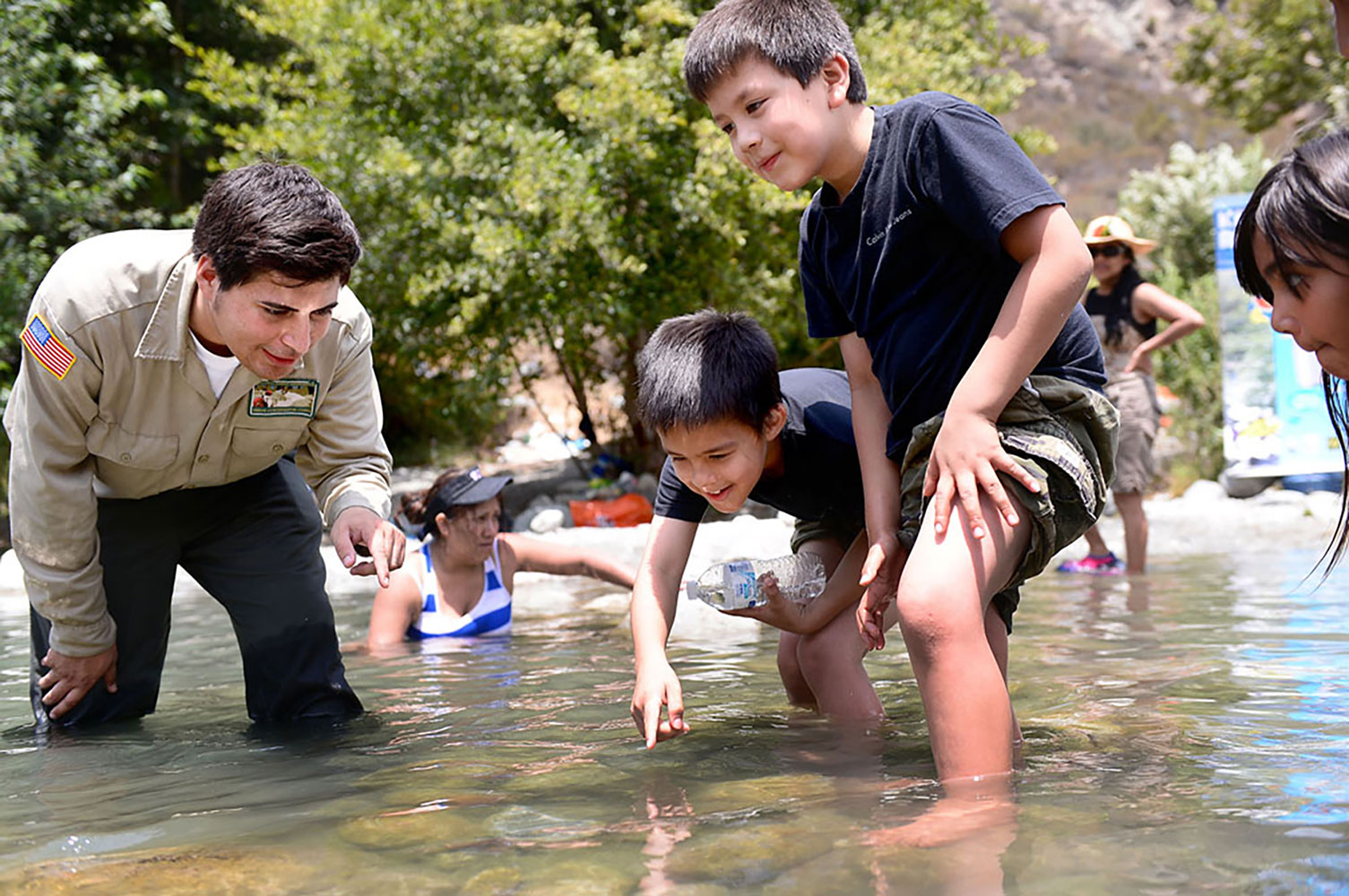About
The San Gabriel and Lower Los Angeles Rivers and Mountains Conservancy (RMC) was created by the California legislature in 1999. We’re one of ten conservancies within the California Resources Agency. Our mission is to preserve open space and habitat in order to provide for low-impact recreation and educational uses, wildlife habitat restoration and protection, and watershed improvements within our jurisdictions. This work supports the public’s enjoyment and enhancement of recreational and educational experiences on public lands in a manner consistent with the protection of lands and resources in those watersheds.
Territory
RMC’s jurisdiction includes eastern Los Angeles County and western Orange County, comprised of the San Gabriel River Watershed and its tributaries, the Lower Los Angeles River Watershed and its tributaries, Upper Santa Clara River and its tributaries, the Dominguez Channel watershed, northern slope of the Angeles National Forest, the San Gabriel Mountains National Monument, Puente Hills and the San Jose Hills.
View the list of cities and more details about the region’s physical geography.
Partners
The RMC’s territory contains many governmental and non-governmental organizations. The RMC maintains both formal and informal partnerships that range from very close to casual. Learn more about RMC’s partnerships.
Policies
RMC’s overall policy guidelines are found in two key sources:
Public Resources Code Section 32600 (the enabling statute), and Common Ground: From the Mountains to the Sea, the open space and watershed plan for the Los Angeles and San Gabriel Rivers. Capital funding is provided through voter-approved propositions.
Founding Legislation
In January 1999, Senator Hilda Solis introduced legislation to create a San Gabriel River Conservancy with no powers of condemnation or control over city zoning. After several revisions, the scope expanded to include the entire San Gabriel River Watershed and the Lower Los Angeles River. Solis’ bill and a companion bill from Assemblywoman Sally Havice were signed into law, forming the RMC, as codified in the
California Public Resources Code.
Environmental Justice Policy
RMC adopted its Environmental Justice Policy (RMC Resolution 2014-19), which emphasizes:
- Community-driven empowerment and organizing,
- Identification of incompatible land uses, and
- Opportunities to build green infrastructure and promote alternative transportation such as walking and bicycling.
Read the full policy:
Environmental Justice Policy PDF.
Tribal Consultation Policy
RMC adopted a Tribal Consultation Policy (RMC Resolution 2017-14) that aligns with the policy of the California Natural Resources Agency.
Read the Tribal Consultation Policy PDF.
Joint Powers Authorities
RMC participates in two joint powers authorities:
RMC Staff
RMC Board Members
The board structure is defined in Public Resources Code Section 32605. It includes fifteen voting members and nine non-voting ex officio members. View the current list of RMC Board Members.



